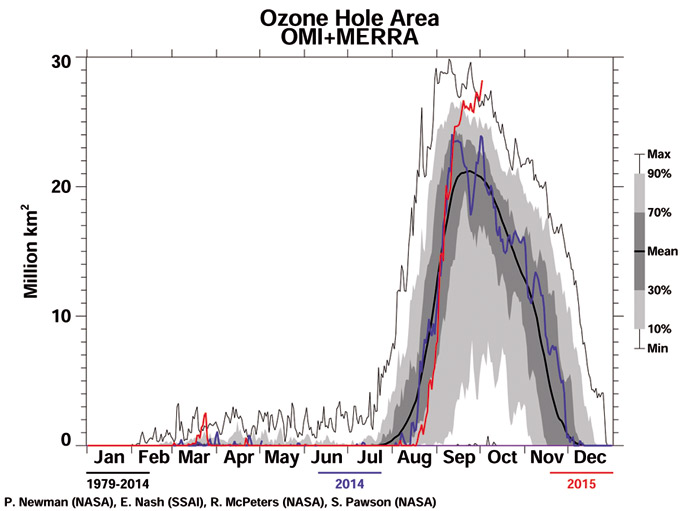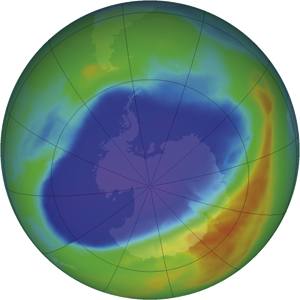An ozone hole appears in the Arctic
- At the end of March, the Arctic stratosphere saw a 90% drop in ozone at an altitude of 18 kilometres, according to scientists from different scientific bodies. This situation has not occurred since 2011.

The low temperatures recorded this year in the upper layers of the atmosphere have allowed for this phenomenon. In fact, low temperatures favor the formation of clouds in the stratosphere. Around these clouds, and with the help of sunlight, some chemical compounds that contain chlorine or bromine produce reactions that damage the ozone layer.
The phenomenon is common in Antarctica, where low temperatures are accompanied by major changes. However, the Montreal Protocol, which prevented the production of CFCs, has greatly weakened the ozone hole. In the case of the Arctic, temperatures are usually more variable and extreme temperatures that can damage the ozone layer are not maintained for a long time. This year, however, polar violence has been particularly strong, that is, the western wind system circulating through the North Pole. According to experts, these winds isolating the Arctic from the rest of the world ' s meteorological systems have contributed to maintaining low temperatures in the stratosphere, creating the right conditions for the formation of the ozone layer.
In 2018, the North Pole has not recorded any fusion records and Trump will have the excuse to go ahead with coal-burning power plants or vehicles operating on the basis of fossil fuels; or Bolsonaro buy land for intensive agriculture in the Amazon; or Macron to delay as far as... [+]
HFCen ordez beste substantzia kutsatzaile batzuk zabalduko ote diren kezka agertu du Greenpeacek, eta alternatiba naturalak sustatzeko eskatu du.
What we announced three weeks ago has not been achieved. Although the decline in ozone levels seemed to be normal, researchers have measured data that have not been seen for a long time. The chart below shows the data up to October 2:
As can be seen, until mid-September we can... [+]
Measurements of Antarctica until mid-September reveal the ozone shortage in Antarctica at this time. Data appears to follow the same line as last year, i.e. they are neither very good nor very malos.La the main difference in recent years is
that the ozone shortage is occurring... [+]
Iraileko lehen astean, hainbat telebista katetako albistegietan, aurten ozono geruzak ia kalterik jasan ez duela esateaz gain, ozonoaren krisia amaitzear zegoela adierazi zuten.
In the last 30 years, it is at this time that ozone depletion occurs in Antarctica. The situation detected in the 1980s triggered all the alarms internationally and, interestingly, immediate action was taken.
From then until the end of August and until mid-October, special... [+]
In September we made two mentions of the ozone hole in the Light. In one we gave the address of the website that explains the evolution of the ozone level, and in the other we explained... [+]
[+]
http://ttiki.com/5881 (Frantsesez)
















